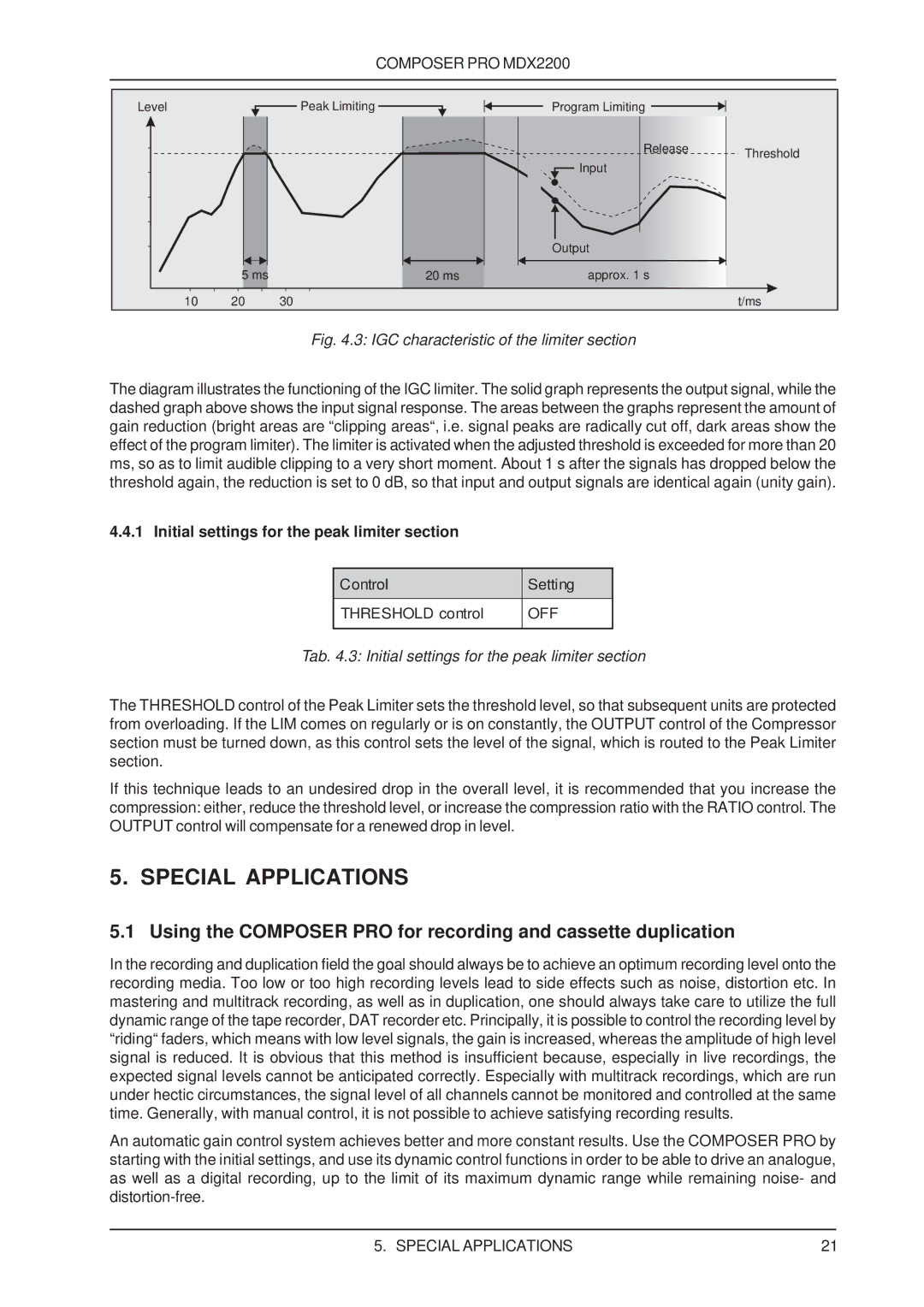
COMPOSER PRO MDX2200
Level |
| Peak Limiting | Program Limiting |
|
|
|
| Release | Threshold |
|
|
|
| |
|
|
| Input |
|
|
|
| Output |
|
| 5 ms | 20 ms | approx. 1 s |
|
10 | 20 | 30 |
| t/ms |
Fig. 4.3: IGC characteristic of the limiter section
The diagram illustrates the functioning of the IGC limiter. The solid graph represents the output signal, while the dashed graph above shows the input signal response. The areas between the graphs represent the amount of gain reduction (bright areas are “clipping areas“, i.e. signal peaks are radically cut off, dark areas show the effect of the program limiter). The limiter is activated when the adjusted threshold is exceeded for more than 20 ms, so as to limit audible clipping to a very short moment. About 1 s after the signals has dropped below the threshold again, the reduction is set to 0 dB, so that input and output signals are identical again (unity gain).
4.4.1 Initial settings for the peak limiter section
Control | Setting |
THRESHOLD control | OFF |
|
|
Tab. 4.3: Initial settings for the peak limiter section
The THRESHOLD control of the Peak Limiter sets the threshold level, so that subsequent units are protected from overloading. If the LIM comes on regularly or is on constantly, the OUTPUT control of the Compressor section must be turned down, as this control sets the level of the signal, which is routed to the Peak Limiter section.
If this technique leads to an undesired drop in the overall level, it is recommended that you increase the compression: either, reduce the threshold level, or increase the compression ratio with the RATIO control. The OUTPUT control will compensate for a renewed drop in level.
5. SPECIAL APPLICATIONS
5.1 Using the COMPOSER PRO for recording and cassette duplication
In the recording and duplication field the goal should always be to achieve an optimum recording level onto the recording media. Too low or too high recording levels lead to side effects such as noise, distortion etc. In mastering and multitrack recording, as well as in duplication, one should always take care to utilize the full dynamic range of the tape recorder, DAT recorder etc. Principally, it is possible to control the recording level by “riding“ faders, which means with low level signals, the gain is increased, whereas the amplitude of high level signal is reduced. It is obvious that this method is insufficient because, especially in live recordings, the expected signal levels cannot be anticipated correctly. Especially with multitrack recordings, which are run under hectic circumstances, the signal level of all channels cannot be monitored and controlled at the same time. Generally, with manual control, it is not possible to achieve satisfying recording results.
An automatic gain control system achieves better and more constant results. Use the COMPOSER PRO by starting with the initial settings, and use its dynamic control functions in order to be able to drive an analogue, as well as a digital recording, up to the limit of its maximum dynamic range while remaining noise- and
5. SPECIAL APPLICATIONS | 21 |
